
The road sign used to read 'Damour' but a gloating by-passer has scribbled over it "Moudammara" - "Destroyed", in Arabic, topped with the word "Fatah"
The Massacre and Destruction of Damour
Arafat's PLO and Syria's Sa'iqa brigade slaughters men, women, and children....582 civilians killed
Damour lay across the Sidon - Beirut highway about 20 km south of Beirut on the slopes of a foothill of the Lebanon range. On the other side of the road, beyond a flat stretch of coast, is the sea. It was a town of some 25,000 people, containing five churches, three chapels, seven schools, private and public, and one public hospital where Muslims from near by villages were treated along with the Christians, at the expense of the town.
On 9 January 1976, three days after Epiphany, the priest of Damour Father Mansour Labaky, was carrying out a Maronite custom of blessing the houses with holy water. As he stood in front of a house on the side of the town next to the Muslim village of Harat Na’ami, a bullet whistled past his ear and hit the house. Then he heard the rattle of machine-guns. He went inside the house, and soon learned that the town was surrounded. Later he found out by whom and how many — the forces of Sa’iqa, consisting of 16,000 Palestinians and Syrians, and units of the Mourabitoun and some fifteen other militias, reinforced by mercenaries from Iran, Afghanistan, Pakistan and a contingent of Libyans. Father Labaky telephoned the Muslim sheikh of the district and asked him, as a fellow religious leader, what he could do to help the people of the town. ‘I can do nothing,’ he was told ‘They want to harm you. It is the Palestinians. I cannot stop them.'
While the shooting and some shelling went on all day, Father Labaky telephoned a long list of people, politicians of both the Left and the Right, asking for help. They all said with apologies and commiserations that they could do nothing. Then he telephoned Kamal Jumblatt, in whose parliamentary constituency Damour lay. ‘Father,’ Jumblatt said, ‘I can do nothing for you, because it depends on Yasser Arafat.’ He gave Arafat’s phone number to the priest. An aide answered, and when he would not call Arafat himself, Father Labaky told him, ‘The Palestinians are shelling and shooting at my town. I can assure you as a religious leader, we do not want the war, we do not believe in violence.’ He added that nearly half the people of Damour had voted for Kamal Jumblatt, ‘who is backing you,’ he reminded the PLO man. The reply was, ‘Father, don’t worry. We don’t want to harm you. If we are destroying you it is for strategical reasons.’ Father Labaky did not feel that there was any less cause for worry because the destruction was for strategical reasons, and he persisted in asking for Arafat to call off his fighters. In the end the aide said that they, PLO headquarters, would ‘tell them to stop shooting’. By then it was eleven o’clock in the evening. As the minutes passed and the shooting still went on, Father Labaky called Jumblatt again on the telephone and told him what Arafat’s aide had said. Jumblatt’s advice was that the priest should keep trying to make contact with Arafat, and call other friends of his, ‘because’, he said, ‘I do not trust him’. At about half-past eleven the telephone, water and electricity were all cut off. The first invasion of the town came in the hour after midnight, from the side where the priest had been shot at earlier in the day. The Sa’iqa men stormed into the houses. They massacred some fifty people in the one night. Father Labaky heard screaming and went out into the street. Women came running to him in their nightdresses, ‘tearing their hair, and shouting "They are slaughtering us!" The survivors, deserting that end of the town, moved into the area round the next church. The invaders then occupied the part of the town they had taken. Father Labaky describes the scen: 'In the morning I managed to get to the one house despite the shelling to bring out some of the corpses. And I remember something which still frightens me. An entire family had been killed, the Can’an family, four children all dead, and the mother, the father, and the grandfather. The mother was still hugging one of the children. And she was pregnant. The eyes of the children were gone and their limbs were cut off. No legs and no arms. It was awful. We took them away in a banana truck. And who carried the corpses with me? The only survivor, the brother ofthe man. His name is Samir Can’an. He carried with me the remains of his brother, his father, his sister-in-law and the poor children. We buried them in the cemetery, under the shells of the PLO. And while I was burying them, more corpses were found in the street.' The town tried to defend itself. Two hundred and twenty-five young men, most of them about sixteen years old, armed with hunting guns and none with military training, held out for twelve days. The citizens huddled in basements, with sandbags piled in front of their doors and ground-floor windows. Father Labaky moved from shelter to shelter to visit the families and take them bread and milk. He went often ‘to encourage the young men defending the town’. The relentless pounding the town received resulted in massive damage. In the siege that had been established on 9 January the Palestinians cut off food and water supplies and refused to allow the Red Cross to take out the wounded. Infants and children died of dehydration. Only three more townspeople were killed as a result of PLO fire between the first night and the last day, 23 January. But on that day, when the final onslaught came, hundreds of the Christians were killed. Father Labaky goes on: 'The attack took place from the mountain behind. It was an apocalypse. They were coming, thousands and thousands, shouting ‘Allahu Akbar! God is great! Let us attack them for the Arabs, let us offer a holocaust to Mohammad ‘And they were slaughtering everyone in their path, men, women and children.'Whole families were killed in their homes. Many women were gang-raped, and few of them left alive afterwards. One woman saved her adolescent daughter from rape by smearing her face with washing blue to make her look repulsive. As the atrocities were perpetrated, the invaders themselves took photographs and later offered the pictures for sale to European newspapers. Survivors testify to what happened. A young girl of sixteen, Soumavya Ghanimeh, witnessed the shooting of her father and brother by two of the invaders, and watched her own home and the other houses in her street being looted and burned. She explained: 'As they were bringing me through the street the houses were burning all about me. They had about ten trucks standing in front of the houses and were piling things into them. I remember how frightened I was of the fire. I was screaming. And for months afterwards I couldn’t bear anyone to strike a match near me. I couldn’t bear the smell of it. She and her mother Mariam, and a younger Sister and infant brother, had been saved from being shot in their house when she ran behind one Palestinian for protection from the pointing gun of the other, and cried out ‘Don’t let him kill us!’; and the man accepted the role of protector which the girl had suddenly assigned to him. ‘If you kill them you will have to kill me too,’ he told his comrade. So the four of them were spared, herded along the streets between the burning houses to be put into a truck, and trans-ported to Sabra camp in Beirut. There they were kept in a crowded prison hut. ‘We had to sleep on the ground, and it was bitterly cold.’ When eventually Father Labaky found the charred bodies of the father and brother in the Ghanimeh house ‘you could no longer tell whether they were men or women’. In a frenzy to destroy their enemies utterly, as if even the absolute limits ofnature could not stop them, the invaders broke open tombs and flung the bones of the dead into the streets.Those who escaped from the first attack tried to flee by any means they could, with cars, carts, cycles and motorbikes. Some went on foot to the seashore to try to get away in boats. But the sea was rough and the wait for rescue was long, while they knew their enemies might fall upon them at any moment. Some 500 gathered in the Church of St Elias. Father Labaky went there at six in the morning when the tumult of the attack awakened him. He preached a sermon on the meaning of the slaughter of innocents. And he told them candidly that he did not know what to tell them to do. ‘If I say flee to the sea, you may be killed. If I say stay here, you may be killed.’ An old man suggested that they raise a white flag. ‘Perhaps if we surrender they may spare us.' Father Labaky gave him his surplice. He put it on the processional cross and stood it in front of the church. Ten minutes later there was a knock on the door, three quick raps, then three lots of three. They were petrified. Father Labaky said that he would go and see who was there. If it was the enemy, they might spare them. ‘But if they kill us, at least we shall die all together and we’ll have a nice parish in Heaven, 500 persons, and no check points!’ They laughed, and the priest went to the door. It was not the enemy but two men of Damour who had fled the town and had seen the white flag from the seashore. They had come back to warn them that it would not help to raise a flag. ‘We raised a flag in front of Our Lady, and they shot at us.’ Again they discussed what could be done. The priest told them that one thing they must do, although it was ‘impossible’, was to pray for the forgiveness of those who were coming to kill them. As they prayed, two of the young defenders of the town who had also seen the flag walked in and said, ‘Run to the seashore now, and we will cover you. The two youths stood in front of the church and shot in the direction from which the fedayeen were firing. It took ten minutes for all the people in the church to leave the town. All 500 got away except one old man who said he could not walk and would prefer to die in front of his own house. He was not killed. Father Labaky found him weeks later in a PLO prison, and heard what had happened after they left. A few minutes after they had gone, ‘the PLO came and bombed the church without entering it. They kicked open the door and threw in the grenades.’ They would all have been killed had they stayed. The priest led his flock along the shore to the palace of Camille Chamoun. But when they got there they found it had already been sacked and partly burnt. They found shelter, however, in the palace of a Muslim, who ‘did not agree with the Palestinians’, and then got into small boats Which took them out to a bigger boat, in which they sailed to Jounieh. ‘One poor woman had to give birth to her baby in the little open boat on the rough winter sea.’ In all, 582 people were killed in the storming of Damour. Even the orange trees were stripped of their fruit in the citrus groves. Father Labaky went back with the Red Cross to bury them. Many of the bodies had been dismembered, so they had to count the heads to number the dead. Three of the men they found had had their genitals cut off and stuffed into their mouths. The horror did not end there, the old Christian cemetery was also destroyed, coffins were dug up, the dead robbed, vaults opened, and bodies and skeletons thrown across the grave yard. Damour was then transformed into a stronghold of Fatah and the PFLP (Popular Front for the Liberation of Palestine). The ruined town became one of the main PLO centres for the promotion of international terrorism. The Church of St Elias was used as a repair garage for PLO vehicles and also as a range for shooting-practice with targets painted on the eastern wall of the nave. The commander of the combined forces which descended on Damour on 23 January 1976 was Zuhayr Muhsin, chief of al-Sa’iqa, known since then throughout Christian Lebanon as 'the Butcher of Damour'. He was assassinated on 15 July 1979 at Cannes in the South of France....
---....---
Iran asks INTERPOL to issue arrest warrants for Israeli war criminals. Olmert, Livni, and Barak on list over Gaza atrocities. Others include Chief of the General Staff Lt. Gen. Gabi Ashkenazi, Commander in Chief of the Israeli Air Force Ido Nehoshtan, Commander of the Gaza war -- Operation Cast Lead -- Maj. Gen. Yoav Galant, Head of Military Intelligence Directorate Maj. Gen. Amos Yadlin, Commander of Battalion 13 in the Golani Brigade Lt. Col. Oren Cohen, Deputy to the Givati Brigade Col. Ron Ashrov, Commander of the Israel Paratroopers' Brigade in Gaza Col. Hertzi Halevy, Commander of 401st Armored Corps Brigade convoy Col. Yigal Slovik, Commander of the 101st Battalion in the Paratrooper Brigade Lt. Col. Avi Blot, Lt. Col. Yoav Mordechai, who served as a commander of the Golani infantry brigade's 13th Battalion in Gaza, Givati squad commander Col. Tomer Tsiter, and Brigade commander in Battalion 51 Col. Avi Peled. ---



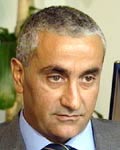
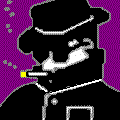



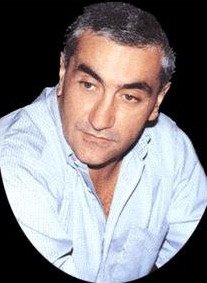

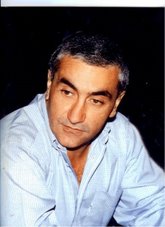
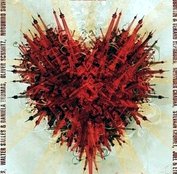
(e)SP_A0012_edited.jpg)



